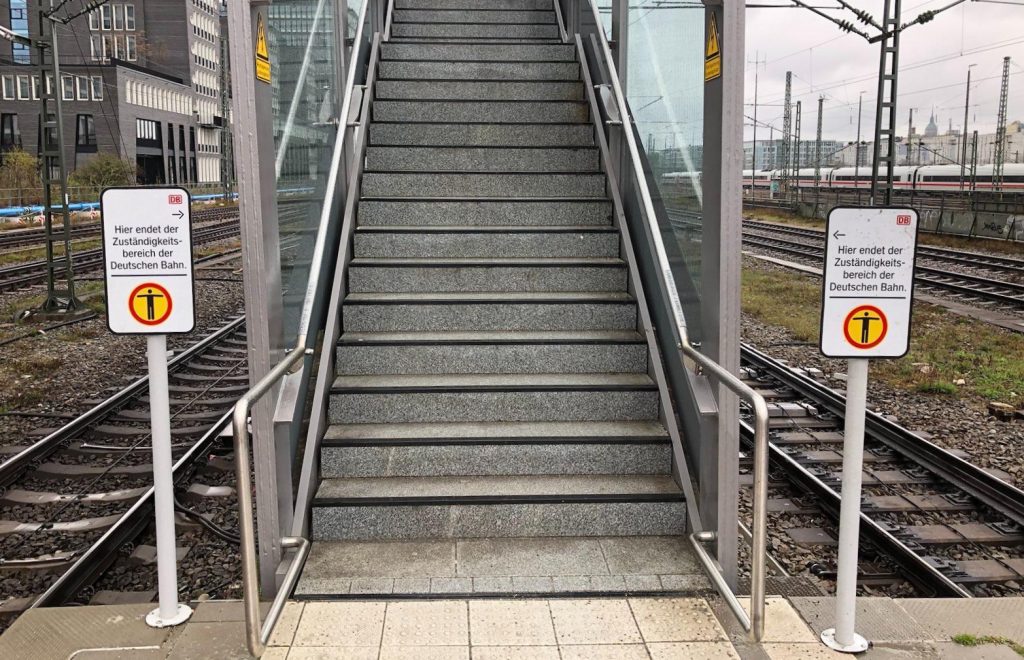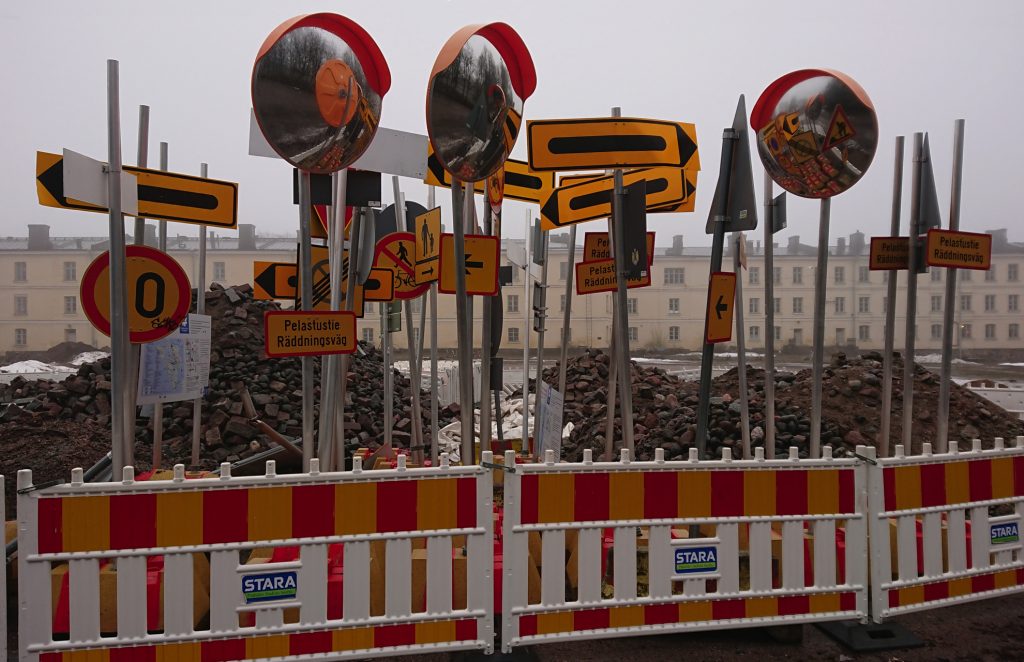Claim your Claim
April 25th, 2023 | by Andreas Richter
(1 min read)
We once pointed out that “borders” are often just imaginative lines that you can’t see in reality. We also mentioned that borders could sometimes be confusing regarding the jurisdiction. If you think that this happens only at the far end of a country, you are sorely mistaken.

Imaginative lines named “land parcel edges” traverse our world. They are used to determine who owns a piece of land. But ownership has its responsibilities. The image above is showing one interesting example of ambiguity of these definitions. In the cadastral data everything may be defined but in reality you hardly can tell. If we look closely, we see the signs which tell us that we are now leaving the jurisdiction of Deutsche Bahn (we are turning a blind eye on the “no passage” part of the sign that might refer to a different part of the end of this platform). The text information with the discreet arrow is important for all travelers facing the slipping hazard and who might be interested to know whom to blame for an accident. But if we take it to the full detail, the signs are not mounted at the same level! How would we have to interpolate the bounding border of “Deutsche Bahn jurisdiction ends here” if something was happening in front of the stairs? Different options could be applied but would the insurance company apply the same border to delimit their case? Maybe it is defined somewhere in the fine print on the back of the signs.

Our respect to the protection of the following construction site: Here, it is absolutely clear that something is different from normality. Very different to be precise!
